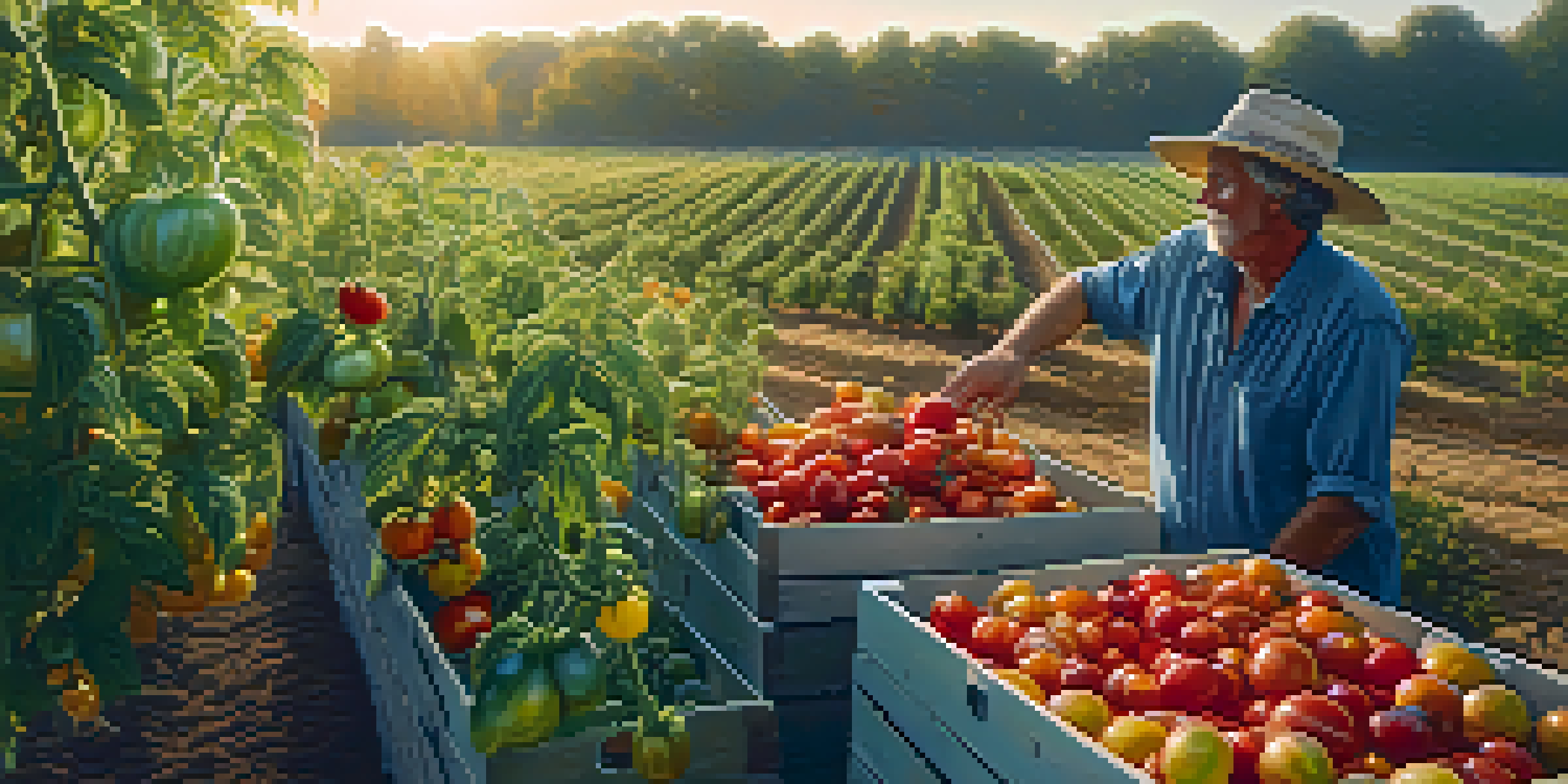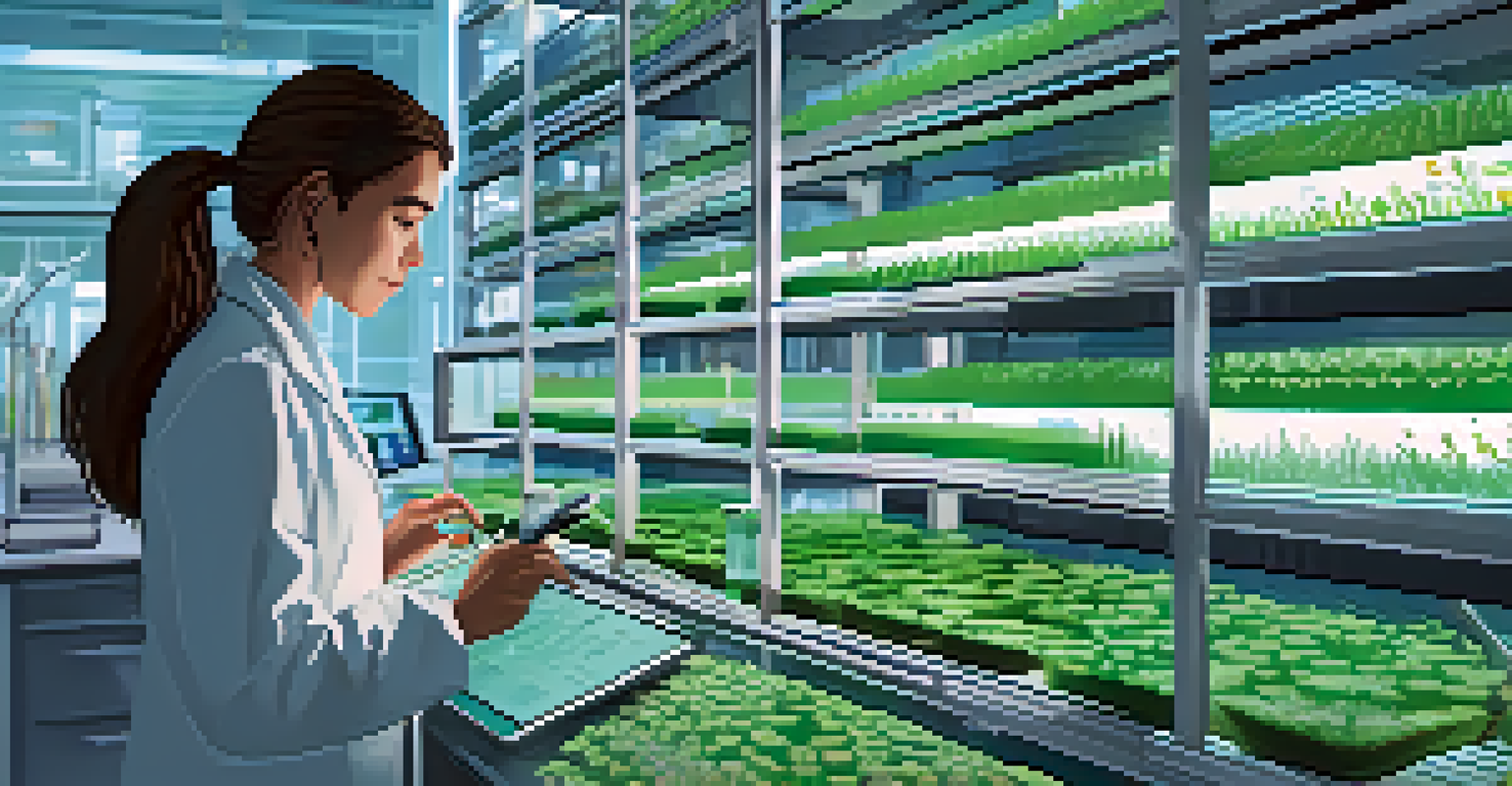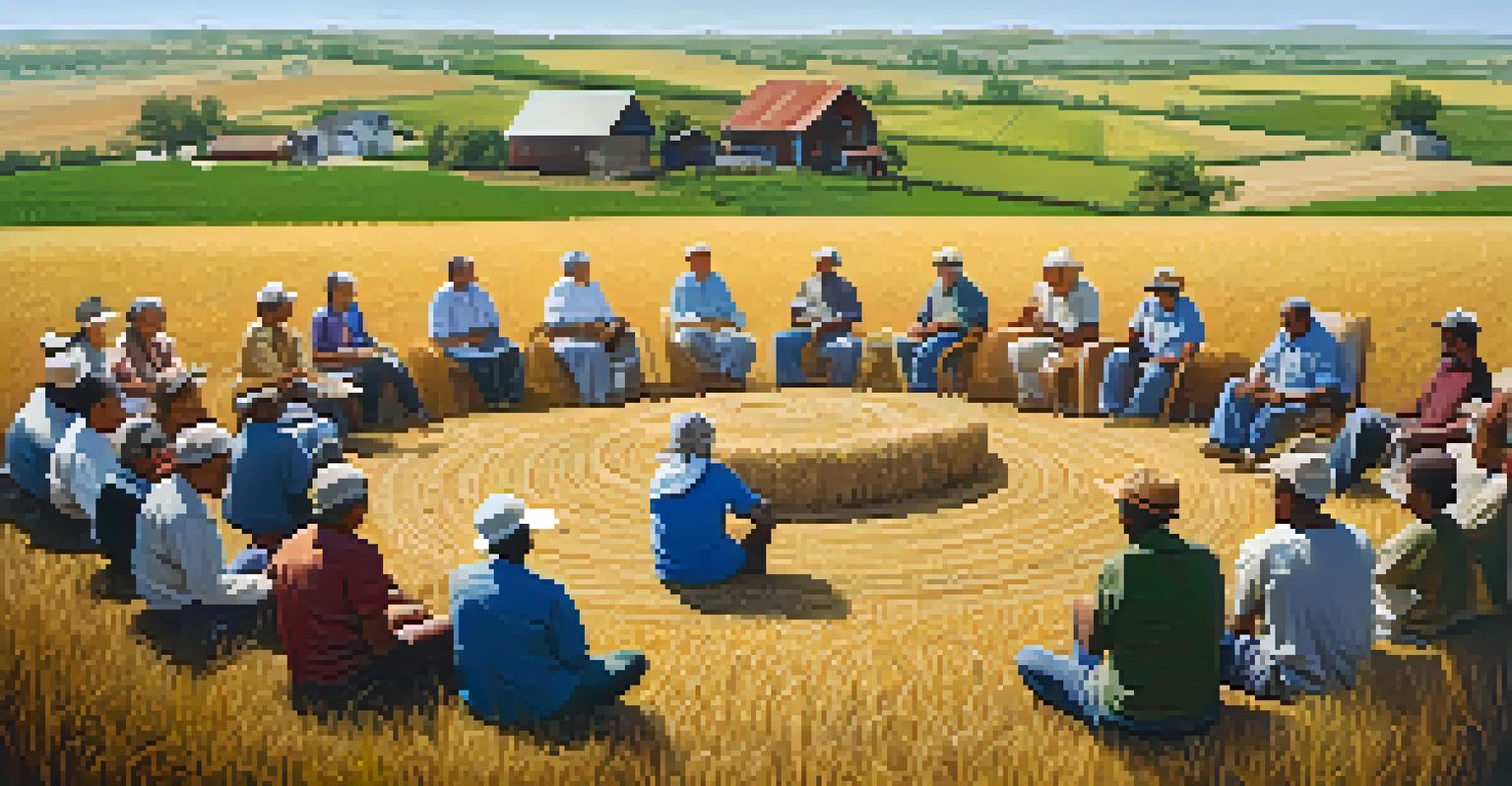Impact of Climate Change on Plant Breeding and Crop Varieties

Climate Change: An Ongoing Challenge for Agriculture
Climate change is more than just a buzzword; it's a pressing reality that affects our planet's ecosystems, particularly agriculture. As temperatures rise and weather patterns shift, farmers face new challenges in growing crops that are both resilient and productive. This ongoing change is forcing a reevaluation of traditional farming practices and the way we approach plant breeding.
The greatest threat to our planet is the belief that someone else will save it.
The impacts of climate change can be seen in decreased crop yields, increased pest populations, and shifting growing seasons. Farmers are not just dealing with the effects of droughts or floods; they must also adapt to unpredictable weather, which complicates their planning. For instance, a farmer may plant crops based on historical weather patterns, only to find that this year, conditions are vastly different.
As a result, there is a significant need for crop varieties that can withstand these challenges. This is where plant breeding plays a crucial role; it helps develop crops that are not only more resilient to climate stresses but also meet the demands of a growing population. Hence, understanding climate change is vital for the future of global agriculture.
The Role of Plant Breeding in Adapting to Climate Change
Plant breeding is the science of developing new varieties of plants with desirable traits, such as drought resistance or improved nutritional value. In the face of climate change, breeders are increasingly focused on creating crops that can thrive in extreme conditions. This process involves selecting parent plants that exhibit traits beneficial for survival in a changing climate.

For example, researchers are working on developing rice varieties that can withstand both flooding and drought. By utilizing traditional breeding methods alongside modern techniques like genetic modification, they can enhance the resilience of crops. This not only helps ensure food security but also supports farmers in adapting to environmental changes in their regions.
Climate Change Challenges Farming
Farmers face unprecedented challenges from climate change, including unpredictable weather and decreased crop yields.
The collaboration between scientists, farmers, and policymakers is essential in this context. By sharing knowledge and resources, we can accelerate the development of crop varieties that can weather the storms—literally—and ensure that agriculture continues to flourish despite the challenges posed by climate change.
The Importance of Genetic Diversity in Crop Varieties
Genetic diversity refers to the variety of genes within a species, and it plays a critical role in the resilience of crops. A diverse gene pool allows for a range of traits that can be beneficial under changing environmental conditions. When it comes to climate change, having a variety of crops means farmers can choose the best-suited plants for their specific conditions.
Sustainability is not a destination; it is a journey that we must take together.
For instance, some heirloom tomato varieties may be more resistant to heat than commercial types. By preserving these diverse strains, we can better equip ourselves to face the unpredictability of climate change. Additionally, fostering genetic diversity helps combat plant diseases that can devastate monoculture crops.
Efforts to maintain and enhance genetic diversity are becoming increasingly important in plant breeding programs. Institutions are working to catalog and preserve traditional varieties, while also experimenting with crossbreeding methods that can introduce new traits into existing crops. This approach not only strengthens food systems but also nurtures the adaptability needed in the face of climate challenges.
Impact of Climate Change on Pest and Disease Resistance
As climate change alters weather patterns, it also affects the prevalence and distribution of pests and diseases. Warmer temperatures can lead to increased pest populations and longer growing seasons, which pose significant risks to crops. This shift necessitates new strategies in plant breeding to ensure that crops can withstand these evolving threats.
For example, certain pests may thrive in warmer climates, making it essential to breed plants with enhanced resistance features. This might involve selecting for specific traits that deter pests or developing plants that can better tolerate damage. By focusing on pest and disease resistance, breeders can help sustain agricultural productivity even in challenging conditions.
Plant Breeding Enhances Resilience
Innovative plant breeding techniques are essential for developing crop varieties that can withstand the stresses of climate change.
Moreover, understanding how climate change affects pest dynamics is crucial for effective crop management. By integrating pest resistance into breeding programs, we can create a more sustainable agricultural system that minimizes the need for chemical interventions. This not only benefits farmers but also contributes to environmental health and biodiversity.
The Role of Technology in Modern Plant Breeding
Technology is revolutionizing plant breeding, making it faster and more efficient than ever before. Tools like CRISPR gene editing allow scientists to make precise changes to a plant's DNA, enhancing desirable traits without introducing foreign genes. This method holds immense potential for developing crops that can better withstand climate stresses.
In addition to gene editing, data analytics and modeling tools help breeders predict how crops will perform under various climate scenarios. By analyzing vast amounts of data, researchers can make informed decisions about which traits to prioritize in their breeding efforts. This approach not only increases the chances of success but also accelerates the breeding process.
Furthermore, technology facilitates collaboration among researchers worldwide, allowing for the sharing of valuable insights and resources. As we harness these innovative tools, we can make significant strides in developing crop varieties that meet the challenges posed by climate change, ultimately ensuring a more food-secure future.
Community Involvement in Plant Breeding Initiatives
Community involvement is a crucial element in the success of plant breeding initiatives. Local farmers often possess invaluable knowledge about their land and the challenges they face, making their input essential in developing effective crop varieties. By engaging communities, breeders can better understand the specific needs and preferences of those who cultivate the land.
For instance, participatory breeding programs empower farmers to collaborate with scientists in selecting and testing new varieties. This approach not only leads to crops that are better suited to local conditions but also fosters a sense of ownership and pride among farmers. When communities are involved, the resulting crops are more likely to be adopted and succeed in the market.
Community Engagement is Crucial
Involving local communities in plant breeding initiatives leads to more effective and sustainable agricultural practices.
Moreover, community-driven initiatives can address issues like food sovereignty and sustainability. By focusing on local varieties and traditional knowledge, we can promote agricultural practices that respect the environment and cultural heritage. Ultimately, involving communities in plant breeding creates a more resilient food system that can adapt to the ongoing impacts of climate change.
Looking Ahead: The Future of Crop Breeding and Climate Resilience
As we look to the future, the intersection of climate change and crop breeding presents both challenges and opportunities. The urgency to develop resilient crop varieties has never been greater, and the scientific community is stepping up to the task. With advancements in technology and a deeper understanding of climate dynamics, the potential for innovation in plant breeding is vast.
However, it will require a collective effort from scientists, farmers, policymakers, and communities to ensure that we are prepared for the inevitable changes ahead. This means investing in research, fostering collaboration, and prioritizing sustainability in our agricultural practices. By doing so, we can create a food system that not only survives but thrives in the face of climate change.

Ultimately, the future of crop breeding lies in our ability to adapt and innovate. By embracing new technologies, valuing genetic diversity, and involving local communities, we can ensure that agriculture remains resilient in a rapidly changing world. Together, we can cultivate a future where both people and the planet can flourish.